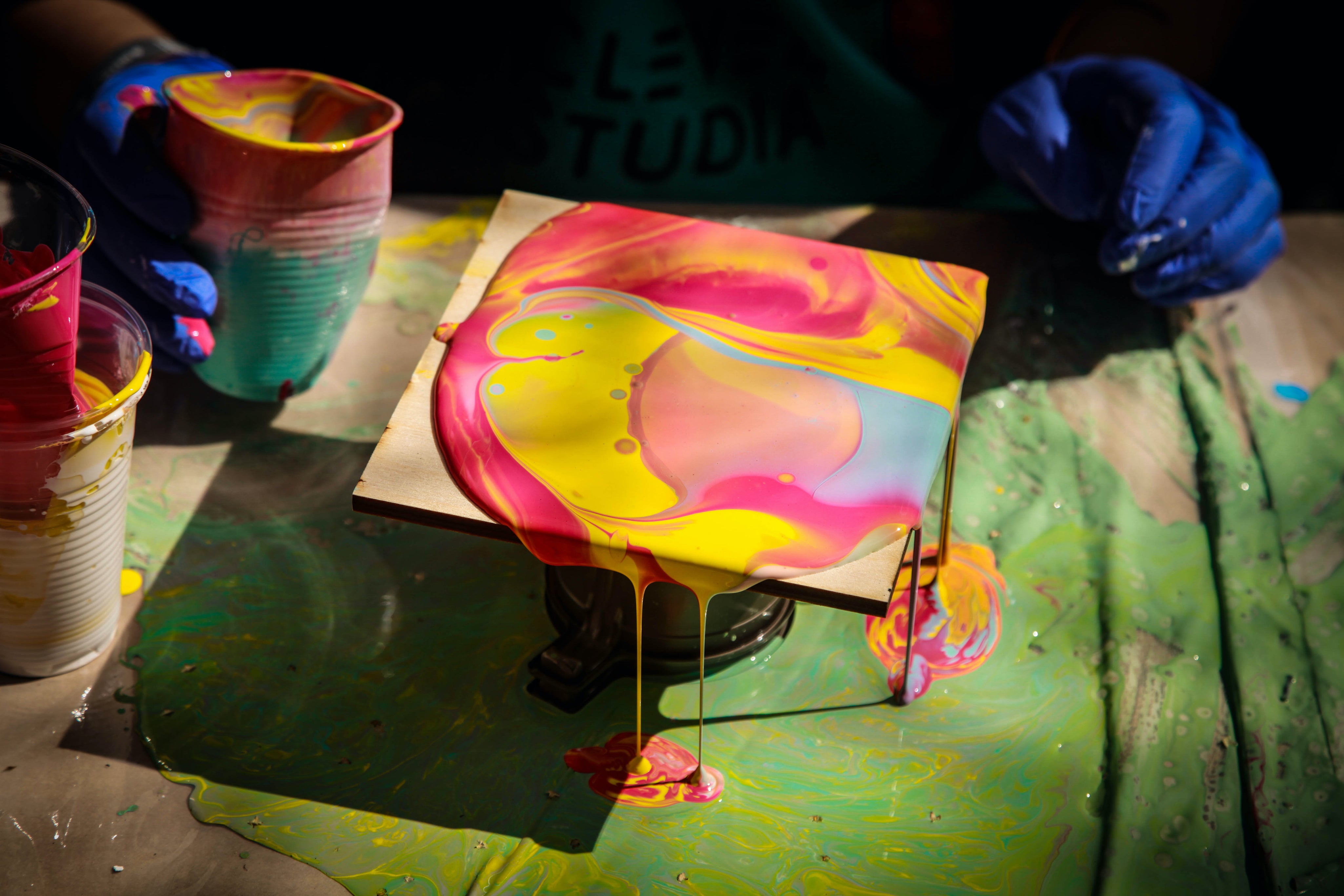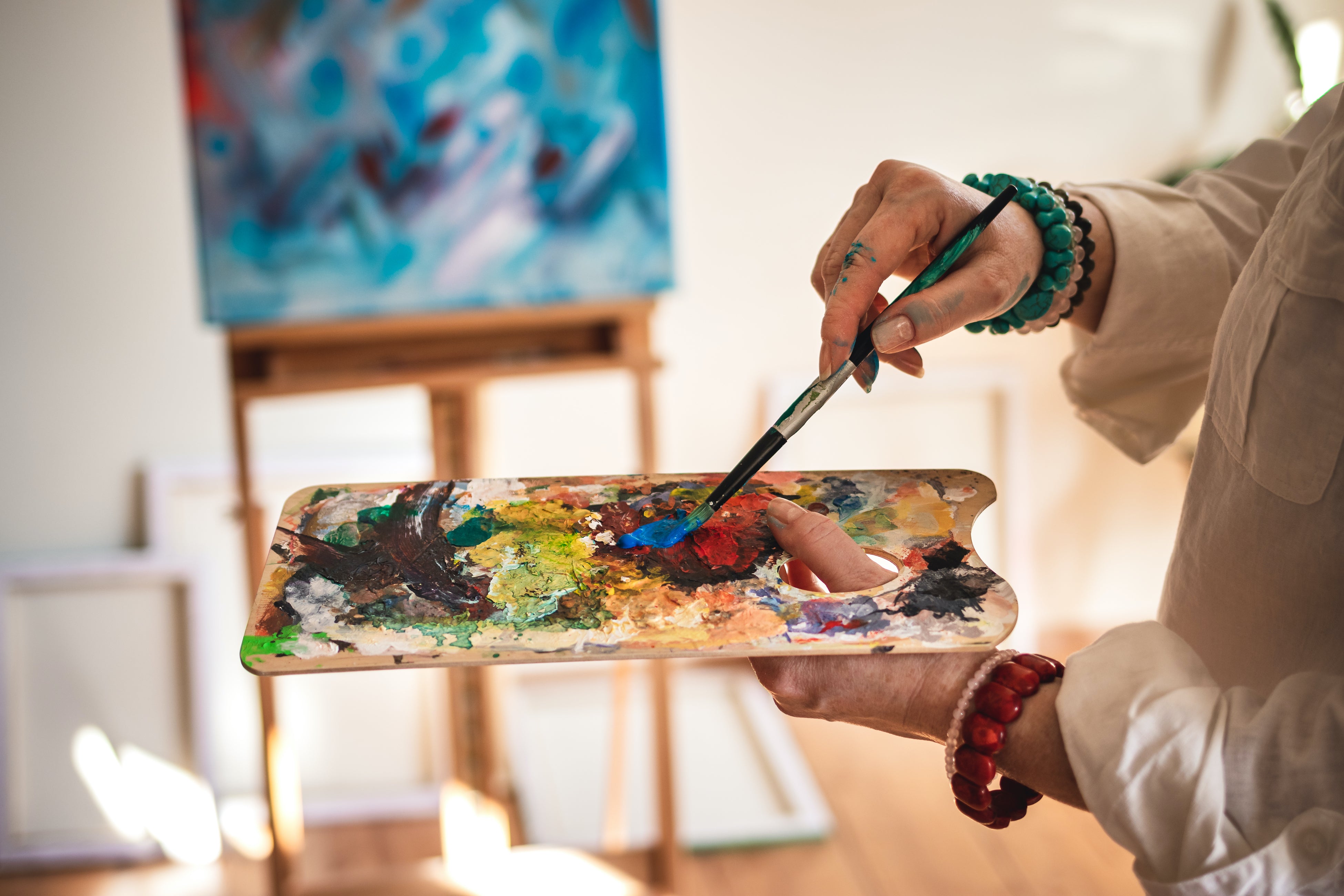All About Acrylic Pours: How to Create One-Of-A-Kind Fluid Art Works

Acrylic pours, also known as fluid art, are a popular art style that involves pouring and manipulating acrylic paints to create beautiful, layered compositions. Here are some pointers for creating beautiful acrylic pours:
- Purchase the proper materials. High-quality paints and pouring media are required for excellent acrylic pours. Choose paints with strong pigmentation and flow, as well as a high-quality pouring medium, to keep your paints fluid and moving smoothly. To create successful acrylic pours, you'll need high-quality paints and pouring mediums. Choose paints with good pigmentation and flow, and invest in a good-quality pouring medium to ensure that your paints stay fluid and move smoothly.
- Begin with a clean, flat surface. Make sure your workplace is clean and clear of clutter, and use a level to maintain an even surface.
- Choose the appropriate substrate. The surface upon which you pour your paint will have a significant impact on the final result. Experiment with various surfaces, such as canvas, wood, or even glass, to determine which works best for your pours.
- To increase the flow of the paint, use a pouring medium. A pouring medium can assist in making the paint more fluid and prevents it from drying too rapidly.
- For creating cells in the paint, use silicone oil. Adding a few drops of silicone oil to your paint mixture might result in little bubbles that can form intriguing patterns.
- Experiment with various pouring methods. You can use a variety of pouring techniques to get a variety of effects in your acrylic pours. The messy pour, flip cup, puddling, swirling, and dripping are all popular approaches. Experiment with several ways to determine what works best for you and the appearance you're trying to achieve.
- To assist the paint flow, use a heat source. Using a heat source, such as a blow dryer or heat gun, can assist in moving the paint and creating intriguing effects.
- Use plastic or a disposable cover to protect your work surface. Because acrylic paint is tough to clean, cover your work surface with plastic or a disposable cover to make cleanup easier.
- To control the flow of paint, use a cup or container with a spout. A spout on a cup or container can help you control the flow of paint and keep it from spreading too quickly.
- Before pouring, mix your paint thoroughly. Mix the paint thoroughly to ensure that the colors are uniformly spread and that no clumps form.
- Spread the paint with a palette knife or a stir stick. A palette knife or stir stick can be used to evenly spread the paint and create intriguing patterns.
- To modify the paint, use a range of tools and approaches. In addition to pouring techniques, you may manipulate the paint and create complicated designs with a number of tools and techniques. To make swirling patterns and textures in the paint, you can use skewers, combs, or even your hands.
- Experiment with different color schemes. Experiment with different color combinations to see what fascinating combos you can come up with.
- Because acrylic paint dries quickly, work swiftly. Because acrylic paint dries quickly, be prepared to move swiftly and make quick decisions.
- To add depth and complexity, use numerous layers. Layering multiple layers of paint can add depth and intricacy to your pour, so don't be afraid to explore.
- Make no apologies about making mistakes. Because fluid art is all about experimenting and exploration, don't be scared to make and learn from mistakes.
- Allow your pour to completely dry before touching it. Because acrylic paint takes a long time to cure, use caution when handling and storing your work.
- Exercise patience. Acrylic pours can be unexpected, and achieving the desired look may take some time and effort. Be patient, accept the trial-and-error process, and don't be scared to explore and try new things.
You can make magnificent acrylic pours and fluid art creations that are genuinely one-of-a-kind by following these suggestions and practicing on a regular basis. The beautiful thing about Fluid Art is that each work is unique, and even if your piece does not turn out as planned, the end result may occasionally be an unplanned masterpiece.


